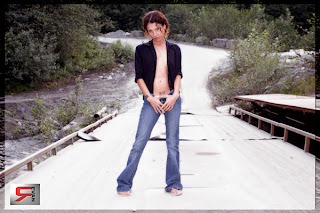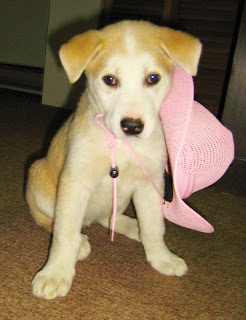On the way to Seymour Mountain in North Vancouver, motorists are entertained by various joke animal-crossing signs, like camel. I didn't realize badgers resided in BC.
When I think of badgers, Wind in the Willows seems to come to mind. What I didn't realize was Mr. Badger wouldn't have gotten along with
 Mole and the other inhabitants of the Wild Wood - he would have eaten them.
Mole and the other inhabitants of the Wild Wood - he would have eaten them.Then again, as student and researcher Richard Klafki told me, English badgers are not as tough as their North American counterparts.
I went along with Klafki on a badger count, part of the Cariboo Badger Project. Klafki and others from the Ministry of Environment, Ministry of Transportation and Thompson Rivers University are using radio telemetry to track members of the dwindling badger population in the province.
Badgers have few natural predators; the steel monsters driven by humans are what really picks them off.
Roger Packham, biologist with the Ministry of Environment, set me up with Klafki, a Master's student doing his thesis on badgers.
We set out on a Sunday morning, driving along Horse Lake Road toward our Bridge Lake area destination.

Along the way, Klafki tried to enlighten me on the ways of the badgers.
He laughed when I asked if I could pet one, and told me we'd be lucky if we even saw one from afar during our trek.
He said, contrary to popular belief, badgers are not rodents - they are part of the weasel family - and they are not interested in eating household pets.
Also contrary to a popular Internet fad video (available at www.badgerbadgerbadger.com) - in which multiple badgers dance about while singing "Badger, badger, badger, badger; mushroom, mushroom! Oh no, snake!" - badgers are not afraid of snakes - they'll eat those, too.
Once we reached a known badger's territory, Klafki turned on the equipment in his truck and I could hear a faint beep.
"That's a female who has two kits,' he said.
He explained 10 badgers - five male, five female - had been trapped and implanted with transmitters.
"Badgers don't really have necks, so it's hard to fit them with a radio collar."
Occasionally Klafki would exit the vehicle and hold out a long antenna to figure out the location of the badger.
Soon we were out of the vehicle, trudging across a vast field, Klafki holding the antenna above his head. The beeping was growing stronger and more frequent, and he pointed to a field and said the badger was in a particular mound of grass.
And that's when we saw a tiny, striped head poke out of the ground.
Mother badger was inspecting us; she was only a few feet away. She slow
 ly dragged her pudgy body from her temporary den and sat on a mound of dirt, lazily scratching her side.
ly dragged her pudgy body from her temporary den and sat on a mound of dirt, lazily scratching her side.She didn't seem exactly comfortable with our presence, but she wasn't bursting out of the hole like the rabbit from Monty Python's Holy Grail, either.
After a while, two more striped faces could be seen emerging from the ground, and mother shepherded her kits a few feet away from the strange visitors.
Klafki and I backed away, leaving the family and allowing mom to hunt the plentiful ground squirrels that whistled warnings around us.








